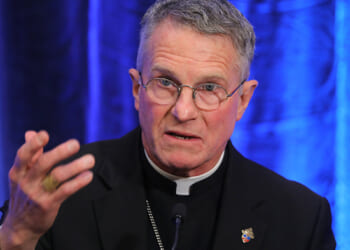Ignoring Kazakhstan will lock the country into China and Russia’s economic orbit.
When President Donald Trump welcomes the leaders of Central Asia to Washington for the C5+1 summit—the first ever to be held at the White House—he will mark the framework’s first decade with a distinctly transactional twist: minerals. The meeting offers Washington a chance to secure a strategic foothold in a region that sits atop some of the world’s richest reserves of critical minerals yet has long been caught between Moscow and Beijing.
This summit comes on the heels of Trump’s recent Asia tour, during which he sealed critical minerals partnerships with Australia, Japan, Malaysia, and Thailand—each deal aimed at reducing Beijing’s dominance of global mineral processing and securing access to materials that power advanced manufacturing, electric vehicles, and defense systems. The logical next step is to extend this effort to Central Asia and make Kazakhstan a founding member of America’s critical minerals club.
Kazakhstan is the natural anchor. It is the world’s top uranium producer and holds an estimated 2.6 million tons of rare earth elements, with a recently identified major deposit potentially vaulting it to third place globally, behind only China and Brazil. The country holds half of the 50 designated as “critical” by the US government and already produces 19 of them. Kazakhstan’s industrial base can already support full-cycle production for several advanced materials, and the government is actively courting Western partners through reforms such as a new subsoil code modeled on Western Australia’s and digital licensing. However, its broader investment regime is still a work in progress.
The Trump administration has pursued two models for critical minerals cooperation in Asia: advanced frameworks with established allies like Australia and Japan, and basic MOUs with emerging partners in this sector, such as Thailand and Malaysia. The advanced framework is the one that suits Kazakhstan: the country’s mining maturity, legal reforms, and political will position it well beyond entry-level cooperation, for a high-impact framework that combines financing, offtake guarantees, and technology transfer.
Indeed, Washington is already testing this model. The administration is reportedly backing US firms in talks to develop one of the world’s largest untapped tungsten deposits in Kazakhstan—a potential pilot for a Western-aligned critical minerals chain. Tungsten, essential for defense manufacturing, is dominated by China, which controls about 80 percent of the global supply. A project, supported by the US International Development Finance Corporation or the Export-Import Bank, would embed American capital and technology in Kazakhstan’s mining sector, directly competing with Chinese bidders.
After all, it is this place that British geographer Sir Halford Mackinder described as the “Heartland” over a century ago. According to Mackinder, dominance over the core of Eurasia determines the balance of global power. That insight still holds, and Kazakhstan sits right in the middle of that “Heartland.” Strategic investment in sectors like mining deep inside Eurasia’s core can transform that geography into geopolitical leverage.
Yet geography cuts both ways. Kazakhstan’s landlocked position and entrenched dependence on Russian and Chinese transit routes create geopolitical challenges, while uneven regulatory standards and high financing risks deter Western investors. As Astana races to expand output, it is China that buys the majority and dominates active mining ventures. Unless the United States and its allies help build processing capacity and secure westbound corridors, Beijing’s logistical and financial grip will constrain regional diversification.
These bottlenecks reflect a larger contest: the global struggle to control critical mineral supply chains. Russia and China are constructing a triangular “energy-transport-payments” architecture—a geo-economic rewiring of Eurasia. Its three Beijing-centric pillars are clear: energy flows from Russia and Central Asia; transport corridors move resources through pipelines, rail lines, and the Arctic, Northern, and Trans-Siberian corridors; and yuan-based payment systems are supported by CIPS and the digital renminbi.
Together, these form a self-contained economic triangle, Moscow and Beijing’s vision of Eurasian integration without the dollar. In the short term, this architecture provides a sanctions workaround. In the long term, it aims at the de-Westernization of trade across the Heartland—a transformation driven not by ideology, but by infrastructure, currency, and control.
To prevent this consolidation of the Russia-China axis over Eurasia, the United States must lay down economic tripwires in the form of strategic investments against Russian or Chinese domination. The precedent exists. Western oil majors at Tengiz and Kashagan have long acted as de facto guarantors of Kazakhstan’s sovereignty, anchoring the country in global markets even as wars and sanctions reshaped the region. Those projects turned energy infrastructure into geopolitical deterrence, and a new generation of critical minerals ventures could play the same role. For Washington, investing now in secure, non-Chinese supply chains should not be about short-term profit but a long-term strategic bet that will pay geopolitical dividends for decades.
As Zbigniew Brzezinski once noted, Kazakhstan is “the shield” of Central Asia. Strengthening that shield now means anchoring it in the West’s economic architecture, not through ideology, but through investment, technology, and enduring strategic partnership. By inviting Kazakhstan into America’s critical minerals club, President Trump can transform resource cooperation into a grand strategy, secure supply chains, counter Russian and Chinese influence, and establish a legacy that will redefine the geopolitics of Eurasia for a generation.
About the Author: Dana Masalimova
Dr. Dana Masalimova is a Visiting Scholar at the Davis Center for Russian and Eurasian Studies at Harvard University.
Image: Lutsenko Larissa / Shutterstock.com.


















